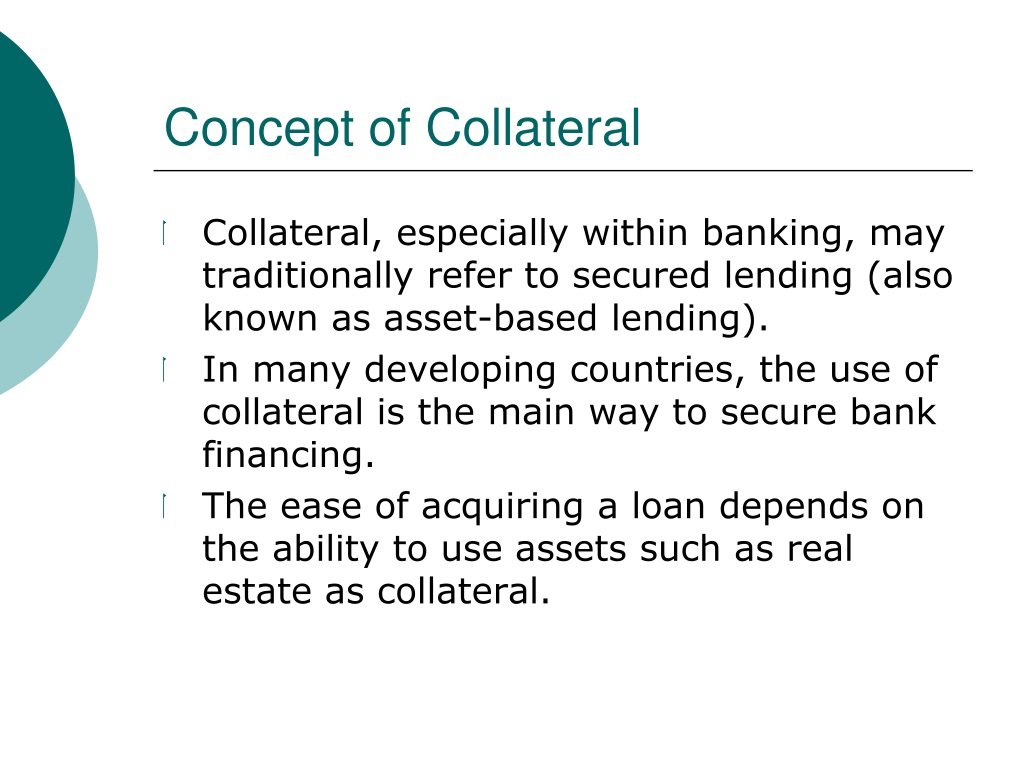Types of Collateral for Personal Loans
When it comes to borrowing money, collateral can play a crucial role in securing a loan and obtaining favorable terms. Collateral is an asset that you pledge to the lender as security against the loan. If you fail to repay the loan, the lender has the right to seize and sell the collateral to recover their losses. Understanding different types of collateral can help you make informed decisions when seeking personal loans.
1. Real Estate: One of the most common forms of collateral is real estate, such as your home or investment property. Using real estate as collateral can provide access to larger loan amounts and lower interest rates but also places your property at risk.
2. Vehicles: Another popular option is using vehicles as collateral. Whether it’s a car, motorcycle, boat, or recreational vehicle (RV), these assets hold value that lenders are willing to accept as security against a loan.
3. Investment Portfolios: Individuals with substantial investment portfolios may be able to use them as collateral for borrowing purposes. This allows individuals to tap into their investments without liquidating them entirely.
4. Jewelry: Precious metals like gold and gemstones have inherent value that can be used as collateral for personal loans. However, specific factors such as quality, condition, and market demand affect how much value jewelry holds in this context.
5. Small Business Assets: Entrepreneurs looking for financing options often pledge business assets such as equipment or inventory as collateral for small business loans.
While using collaterals offers advantages like better interest rates and higher borrowing limits, there are also risks involved:
1. Risk of Asset Loss: If you default on your loan payments, your lender has the legal right to seize and sell your pledged asset(s). This means losing valuable possessions or even homes if used as collateral.
2.Risk of Depreciation: Some forms of collateral like vehicles or jewelry may lose value over time due to depreciation or changing market conditions. This can affect the amount of money you can borrow against them.
3. Risk of Overleveraging: Using multiple assets as collateral may increase your borrowing capacity, but it also amplifies the risk. If you default on the loan, you could lose multiple assets simultaneously.
When applying for a loan with collateral, lenders will evaluate various factors to determine eligibility and terms:
1.Credit Scores: Your creditworthiness plays an essential role in securing a personal loan with collateral. Lenders consider your credit history when determining interest rates and borrowing limits.
2.Types of Collateral: Different types of collaterals have different values and risks associated with them. Lenders assess asset liquidity, stability, and market demand before accepting them as collateral.
3.Lien Process: When using an asset as collateral, lenders place a lien on it until the loan is repaid in full. Understanding how this process works ensures clarity regarding ownership rights during repayment periods.
In conclusion, while collateral offers benefits like lower interest rates and higher borrowing limits, borrowers must carefully consider the risks involved in pledging their assets. Additionally, understanding lender requirements for different types of loans can help individuals make informed decisions about which type of collateral to use when seeking financing options for personal or business needs.

